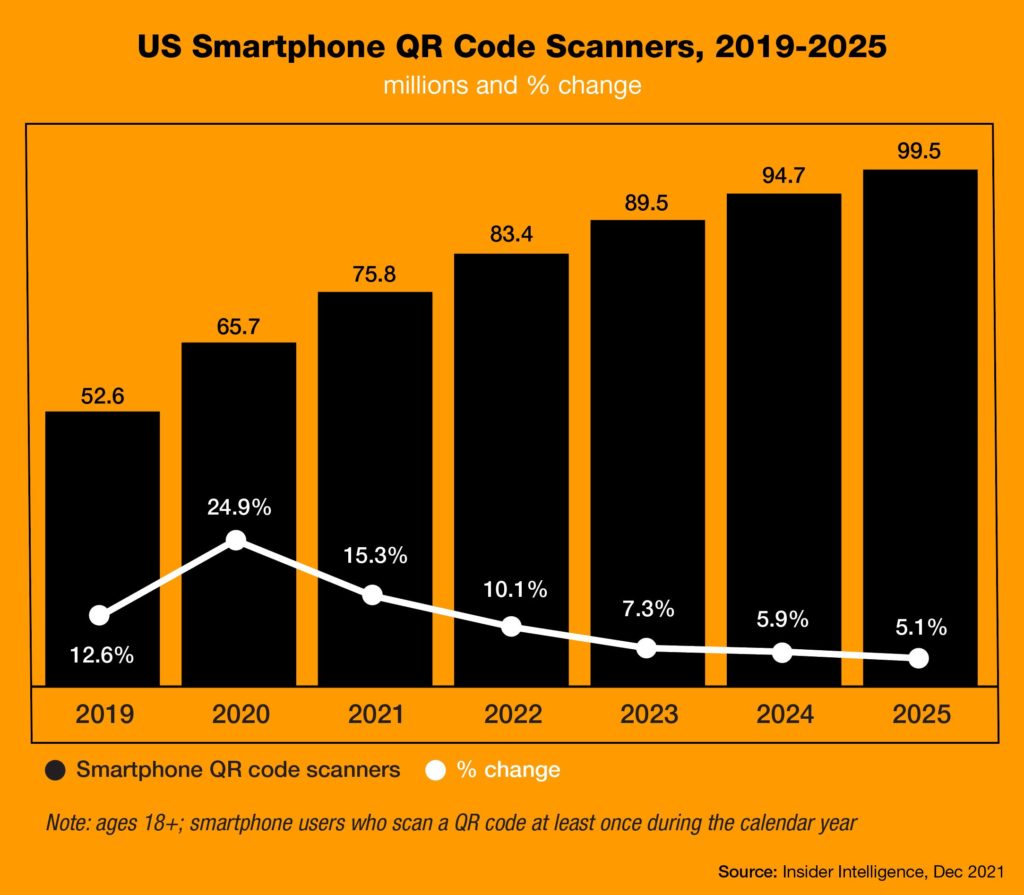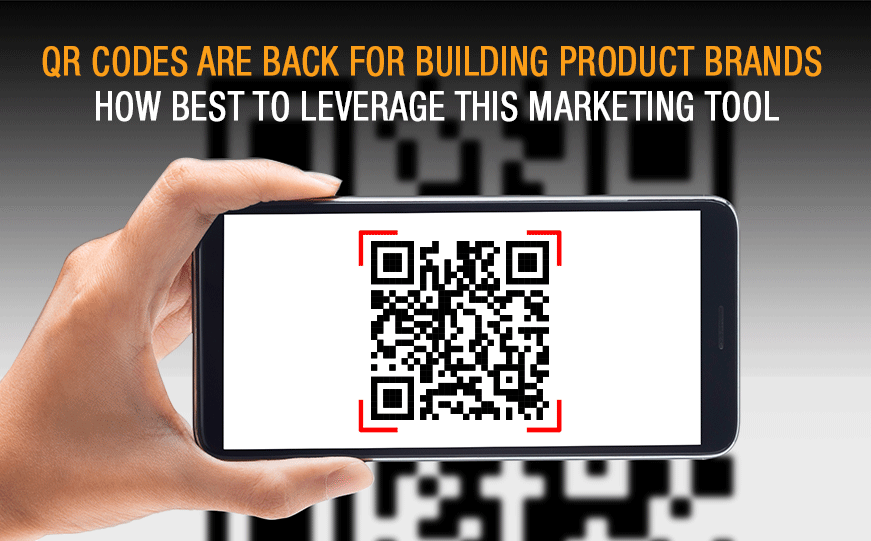Most people who watch the Superbowl each year catch at least some of the ads. And like many of those fans — studying the marketing strategies of each “spot” — is among our favorite experiences of the game.
One commercial that has generated its share of excitement in the past couple of weeks is the ad from crytocurrency platform Coinbase. And why not? It cut through the clutter. Its sole purpose was to offer audiences a dramatic QR code… that floated around on a black background for a solid minute. The goal, of course, was to entice viewers to download the app.
At a reported cost that borders on “obscene,” the ad nevertheless hit the mark. According to Surojit Chatterjee, chief product officer at Coinbase, the QR code’s associated landing page generated more than 20 million hits in 60 seconds. Ultimately crashing the app.
This renewed “buzz” inspired us to report more fully… how to best leverage this highly relevant marketing opportunity for Building Product Brands.
A brief history of the QR Code
“QR” stands for “quick response.” Curiously, it originated as a type of matrix — invented in 1994 by the Japanese company Denso Wave — to track vehicles and parts.
In contrast to a traditional zebra-stripe style barcode, this new QR icon was designed to store far more information… up to 7089 digits, including words and phrases such as internet addresses.
By the early 2000s, the ability to encode a significant amount of data expanded the uses for QR codes well beyond their initial utility. And brands adopted the technology to streamline product packaging for manufacturing lines and for point-of-sale.
Yet, from a strategic marketing opportunity, QR codes failed to gain enough widespread adoption. And the novelty quietly faded.
QR Codes Rise Up from the Ashes
Obscurity? By 2012, INC Magazine stated that 97 percent of consumers didn’t know what a QR code was.
Well, that certainly isn’t the case any longer. Consider the evidence: QR code interactions grew by 94% between 2018 and 2020.
The QR code has clearly re-emerged. And for good reason. It’s an easy-to-access bridge between the physical and digital worlds. Today, smartphones with onboard cameras have become de facto QR code scanners… propelling user experiences such as airline boarding passes and Wi-Fi log-in credentials.

Building product marketing has harnessed this versatile tool’s ability to function as a connector to the web… allowing QR codes to become a highly effective and strategic opportunity.
Here are some proven methods for putting QR codes to work:
Trade Show and Event Materials. Catalogs and other printed collateral are costly to manufacture and transport. So, instead of handing out full-line catalogs at trade shows, determine booth visitors’ specific interest for branded products and unique solutions. Then support efforts to scan QR codes that link to dedicated landing pages, from e-catalogs to microsites. QR codes make it convenient to track who has accessed those materials… improving relevancy and enabling more intimate post-show lead follow-ups.
Business Cards. Rather than listing contact information on a business card, use a QR code to create an interactive electronic card, or “vCard.” vCards can be set up to embed themselves in a contact list, place a call, send an e-mail… or even to connect on social community platforms, automatically.
Social Media. QR codes can be a great way to capture social media followers. They can be programmed to seamlessly connect anyone who scans the code to integrate into a brand’s social sites. What’s more, they provide a convenient way to keep track of those scans — to help analyze social media audience metrics as they quickly, and surely, surge.
Dynamic URL for a website. By converting an online address into a dynamic URL QR code, brands can more easily segment and manage their website marketing efforts. Simply direct a specific audience to a dedicated landing page — instead of the site’s home page — to help ensure target audiences are “arriving” where desired… for more personalized user experiences.
Webinars. Consider including a QR code as part of a webinar presentation — to share documents with attendees — keeping audiences engaged and more fully involved. And remember to also leverage a QR code at the end of the event. To encourage dialogue and gather feedback.
Video Marketing. Use QR codes to share Building Product brand videos rather than waiting for audiences to search for them on a hosting site like YouTube or Vimeo. Include the video QR code on literature and share it on social channels, to lead those who scan it to a single targeted video, or even a series of similar-themed videos.
Interactive User and Installation Guides. QR codes on products can be linked to user and installation guides — eliminating printing and mailing costs — and making these items easily accessible to customers and prospects. As these guides are web-based, “living” documents… they can be enhanced constantly with newly available hyperlinks and regularly updated over time.
QR codes are effective tools for lead-generation, social media growth, and much more. As Building Product Brand marketers consider and realize the renewed benefits of QR codes, the technology’s potential will only continue to gain traction.
Interested in exploring how to leverage marketing automation and technology such as QR codes to better align your building product sales and marketing? Send an e-mail to skleber@kleberandassociates.com to get the conversation started.




